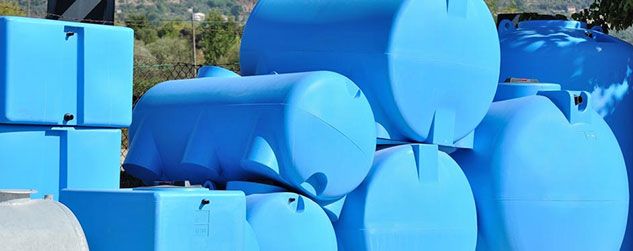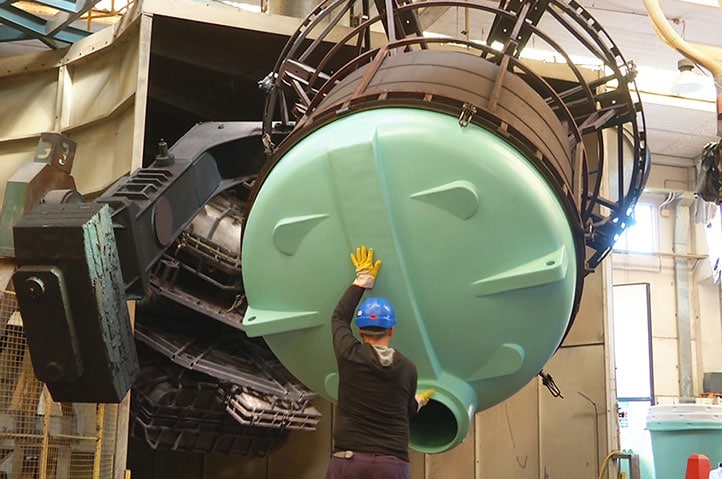Application methods / Rotational
Rotational moulding
Rotational moulding possesses technical characteristics that make it a key player in the production of small batches and large hollow bodies, such as containers, barrels, tanks, water purification tanks, bins.
It also lends itself very well to other uses such as: armchairs, furniture items, lamps, automotive components, medical and healthcare products, agricultural and gardening tools, toys and more.
It is a low-pressure, high-temperature pastiche processing technology based on the adhesion of plastic materials to hollow rotational moulds.
The stages of a process are as follows:
1. Loading the mould with polymeric material, mostly in fine powder, but also in granules or liquid form
2. The mould, once loaded and closed, is heated (e.g. in an oven), and rotated along one or two axes, so that the polymeric material introduced into it can adhere to the walls of the mould, assuming its shape
3. Cooling the mould, always in rotation, so that the polymer solidifies into the desired shape. Rotation is stopped when the polymer material has sufficiently hardened. During this phase, shrinkage of the polymer material occurs, which facilitates the subsequent phase of removing the part from the mould. During this phase, there is also a change in the apparent density of the polymer
4. The mould is then opened and the part obtained is taken out.


